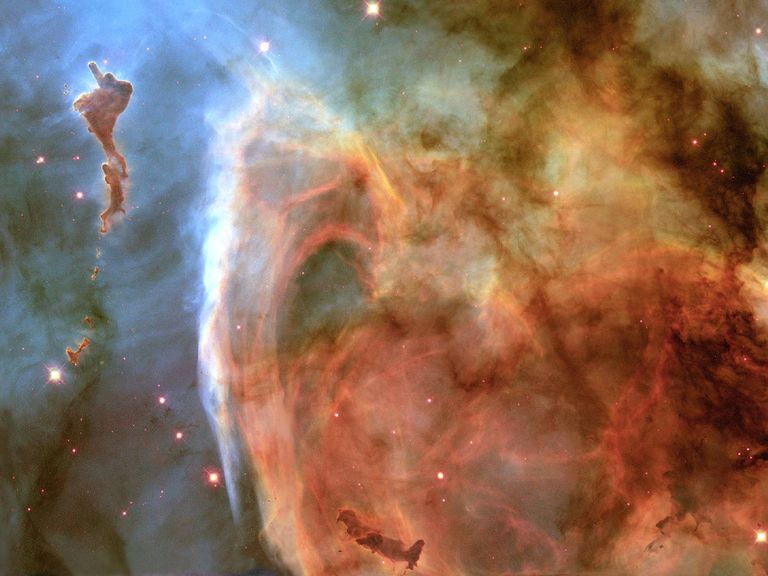Carina Nebula
When astronomers want to look at all the stages of star birth and star death in the Milky Way galaxy, they often turn their gaze to the mighty Carina Nebula, in the heart of the constellation Carina. It’s often referred to as the Keyhole Nebula due to its keyhole-shaped central region. By all standards, this emission nebula (so-called because it emits light) is one of the largest that can be observed from Earth, dwarfing the Orion Nebula in the constellation Orion. This vast region of molecular gas is not well-known to observers in the northern hemisphere since it’s a southern skies object. It lies against the backdrop of our galaxy and almost seems to blend in with that band of light that stretches across the sky.
Since its discovery, this giant cloud of gas and dust has fascinated astronomers. It provides them a one-stop location to study the processes that form, shape, and ultimately destroy stars in our galaxy.
The Carina Nebula (in the Southern Hemisphere sky)
The Carina nebula is part of the Carina-Sagittarius arm of the Milky Way. Our galaxy is in the shape of a spiral, with a set of spiral arms arcing around a central core. Each set of arms has a specific name.
The distance to the Carina Nebula is somewhere between 6,000 and 10,000 light-years away from us. It’s very extensive, stretching across some 230 light-years of space and is quite a busy place. Within its boundaries are dark clouds where newborn stars are forming, clusters of hot young stars, old dying stars, and the remnants of stellar behemoths that have already blown up as supernovae. Its most famous object is the luminous blue variable star Eta Carinae.
The Carina Nebula was discovered by the astronomer Nicolas Louis de Lacaille in 1752. He first observed it from South Africa. Since that time, the expansive nebula has been studied intensely by both ground-based and space-based telescopes. Its regions of star birth and star death are tempting targets for Hubble Space Telescope, the Spitzer Space Telescope, the Chandra X-ray Observatory, and many others.

Hi! I am a robot. I just upvoted you! I found similar content that readers might be interested in:
https://www.thoughtco.com/carina-nebula-4149415
Congratulations @yashodhan, you have decided to take the next big step with your first post! The Steem Network Team wishes you a great time among this awesome community.
The proven road to boost your personal success in this amazing Steem Network
Do you already know that awesome content will get great profits by following these simple steps, that have been worked out by experts?
Congratulations @yashodhan! You received a personal award!
Click here to view your Board
Congratulations @yashodhan! You received a personal award!
You can view your badges on your Steem Board and compare to others on the Steem Ranking
Vote for @Steemitboard as a witness to get one more award and increased upvotes!